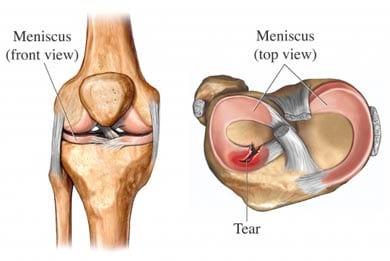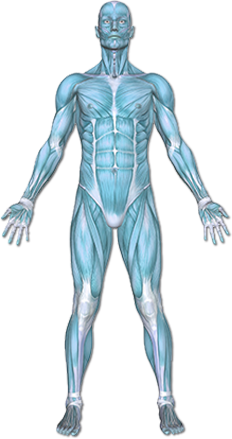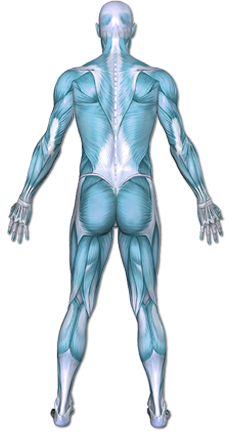Meniscal Tear
A meniscal tear is a tear in the meniscus. The meniscus is cartilage, which acts as a shock-absorbing structure in the knee. There are two menisci in each knee, a medial one on the inside, and a lateral one on the outside.
There are different types of tears depending on the location and how they look. Treatment depends on the severity of the tear.


Copyright © Nucleus Medical Media, Inc.
This content was created using EBSCO’s Health Library
Most injuries to the meniscus are caused by trauma. This usually includes compression and twisting of the knee. Because the aging process tends to break down the inner tissues of the meniscus, minor trauma can injure the meniscus in an older adult.
This content was created using EBSCO’s Health Library
Factors that may increase your risk of:
- Degenerative tears:
- Increasing age, especially over 60 years old
- Male gender
- Occupations that involve kneeling and squatting
- Climbing stairs
- Previous knee injuries
- Obesity
- Acute tears:
- Participating in contact sports, such as soccer or rugby
- Poor techniques for jumping, landing, pivoting, and cutting
This content was created using EBSCO’s Health Library
Symptoms may include:
- A popping sound at the time of the injury
- Pain and swelling in the knee
- Tightness in the knee
- Locking up, catching, or giving way of the knee
- Tenderness in the joint
This content was created using EBSCO’s Health Library
You will be asked about your symptoms and medical history. A physical exam will be done. Your knee may need to be viewed. This can be done with:
- X-ray
- MRI scan
- Arthroscopy
This content was created using EBSCO’s Health Library
Talk with your doctor about the best treatment plan for you. Recovery time ranges depend on the severity of your injury. Physical Therapy treatment may include:
- Gentle stretching to keep the mobility in your knee
- Strengthening exercises to make your entire leg stronger and balance exercises to reduce your risk of falling and re-injury
- Ice and compression to reduce swelling and pain
This content was created using EBSCO’s Health Library
To reduce your chances of a meniscal tears, take these steps:
- Maintain proper technique when exercising or playing sports.
- Wear appropriate footwear for your sport and playing surface.
- Strengthen both the quadriceps and the hamstrings.
- Consider wearing a knee brace for sports.
This content was created using EBSCO’s Health Library
This content was created using EBSCO’s Health Library


